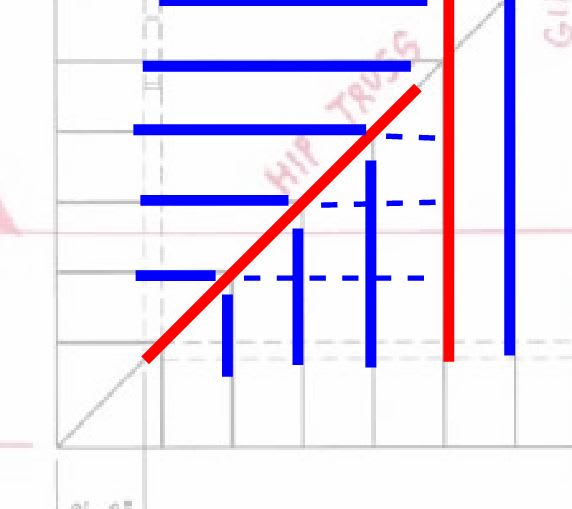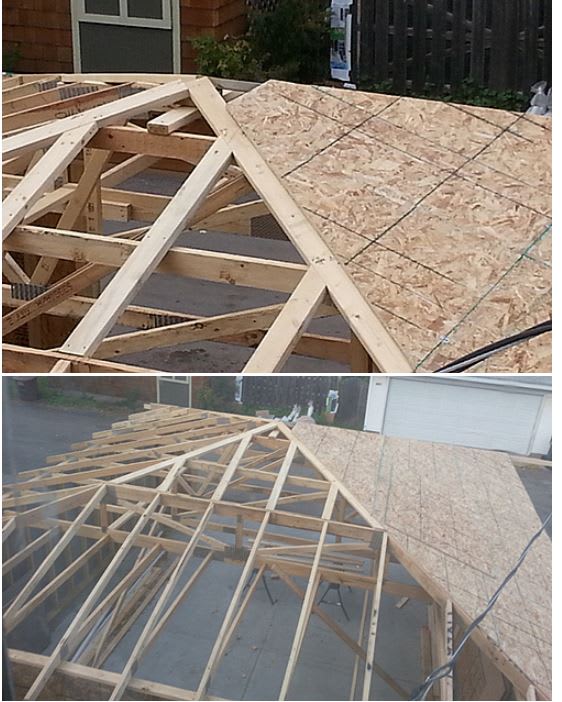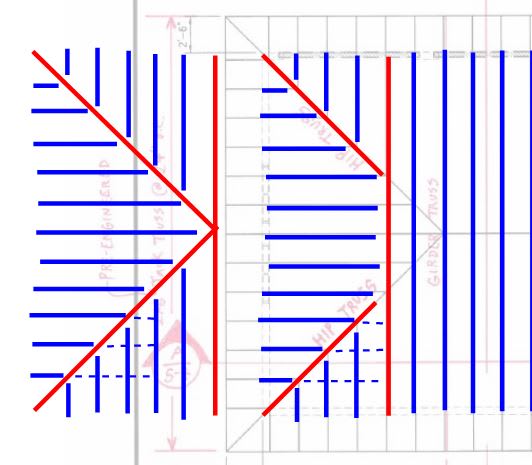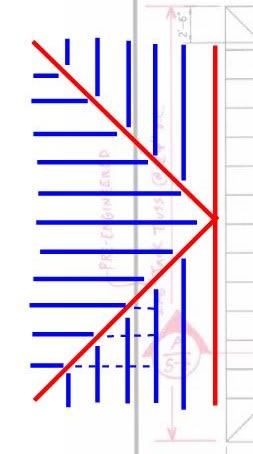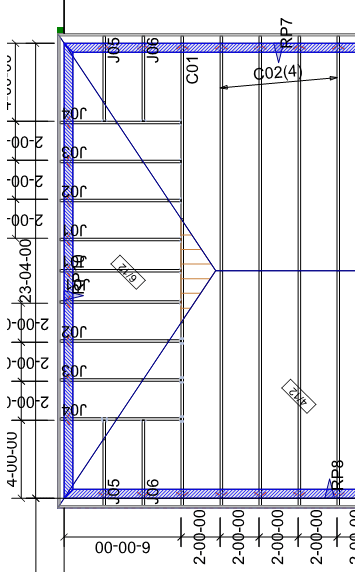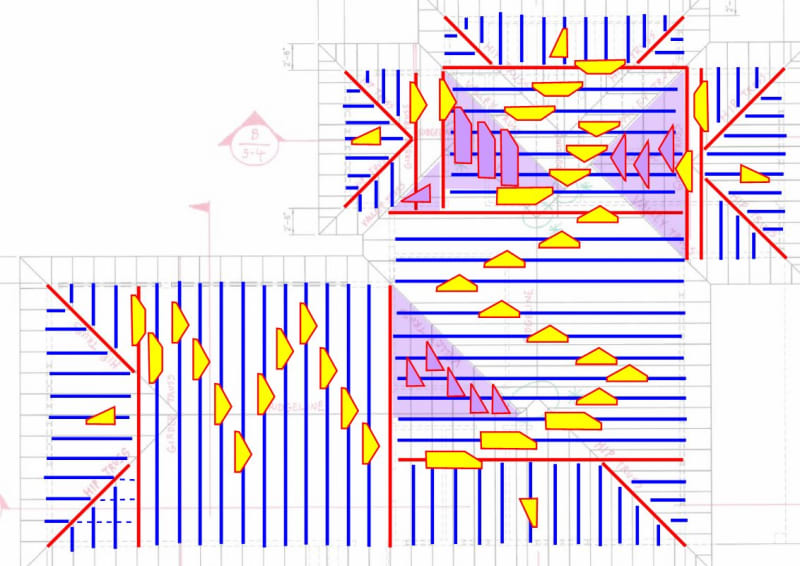I was sent a preliminary house roof framing plan by the drafter/designer who is playing architect and it gave me some pause. Can you guys help me wrap my head around this framing plan and the concerns that I have. It seems as if he drew everything as it was convenient to the exterior perimeter layout but didn't really think about the areas that need interior supports. You can see the outline of the interior walls (dashed) and they don't line up with the locations that need posts.
1. I circled some areas in green that are unsupported. Can you confirm that these areas will either need to be supported with a post to the floor below? Any other areas I'm missing?
2. Can you frame a girder truss into a hip/valley truss? Is there any reason why this would not be allowed?
3. Any other suggestions or problems you see with what is shown right now would be greatly appreciated.
4. The very little guidance I was ever given in regards to designing homes was to callout a minimum 2x6 pre-engineered roof truss at 24" o.c. Not sure if this is even correct and seems more like a bare minimum requirement if anything. What's the standard approach to calling out pre-engineered roof trusses on structural roof framing plans? This particular house is using concrete monier roof tiles. Would that change anything other than how I account for the loads to all the supporting elements? This is in a hurricane prone region.
This is still very preliminary and can be changed as needed but I was hoping for some input from you guys who do this a lot. I do not design houses very often, and my experience with rooflines that are anything other than a rectangular box or stick framed with ridgebeams and rafters is nonexistent. I don't really have anyone that I work with that I can turn to for help.
1. I circled some areas in green that are unsupported. Can you confirm that these areas will either need to be supported with a post to the floor below? Any other areas I'm missing?
2. Can you frame a girder truss into a hip/valley truss? Is there any reason why this would not be allowed?
3. Any other suggestions or problems you see with what is shown right now would be greatly appreciated.
4. The very little guidance I was ever given in regards to designing homes was to callout a minimum 2x6 pre-engineered roof truss at 24" o.c. Not sure if this is even correct and seems more like a bare minimum requirement if anything. What's the standard approach to calling out pre-engineered roof trusses on structural roof framing plans? This particular house is using concrete monier roof tiles. Would that change anything other than how I account for the loads to all the supporting elements? This is in a hurricane prone region.
This is still very preliminary and can be changed as needed but I was hoping for some input from you guys who do this a lot. I do not design houses very often, and my experience with rooflines that are anything other than a rectangular box or stick framed with ridgebeams and rafters is nonexistent. I don't really have anyone that I work with that I can turn to for help.



